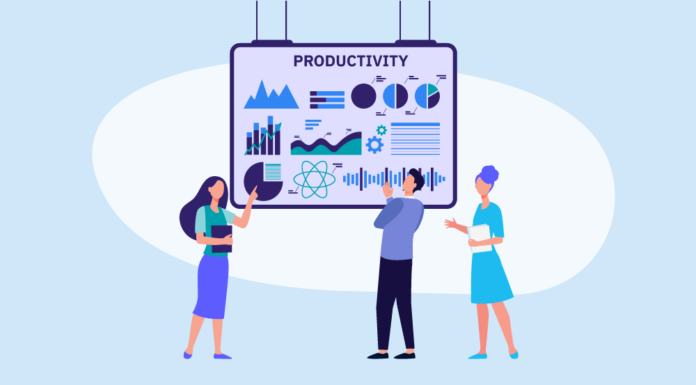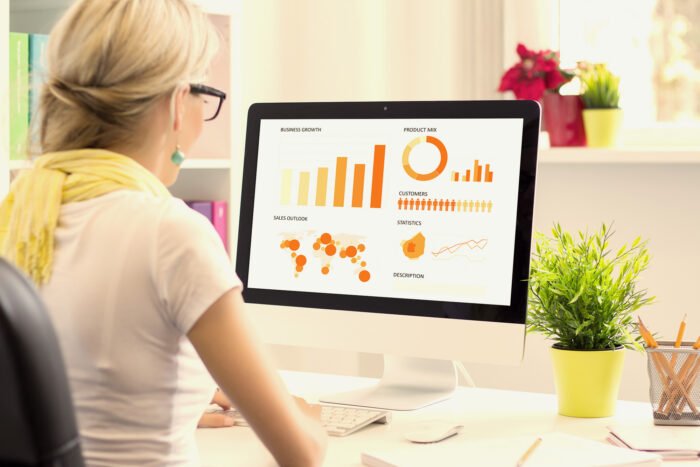
Data visualization and analytics are becoming increasingly important elements in business communication. They can help companies more effectively communicate their message, explain data more clearly, and enhance the overall presentation of key information.
Additionally, using analytics to support decisions provides a greater level of confidence for decision-makers. In this article, we will explore how companies can use data visualizations and analytics within their communication strategies to make their presentations more effective and engaging.
Read more about the most important types of graphs and charts in this blog post from datapine.
1. Presenting results of customer surveys
Analytics and data visualization can be used to accurately convey the results of customer surveys, providing a clear snapshot of the feedback that has been received. This allows businesses to make more informed decisions based on hard data rather than relying on subjective interpretation.
It’s also important that companies use data visualizations in order to help guide users through the complex process of calculating customer satisfaction scores and identifying problems with an individual’s experience. Its all about taking the pain out of the analysis process, and that’s where data visualizations come into play. You can click here to read more on this.
2. Making predictions

Data visualization can be used to create predictive models and forecasts, projecting future trends based on historical information. This allows businesses to anticipate what is likely to happen, allowing them to plan ahead and adjust their strategies accordingly. Whether the business has a specific target to hit or is simply looking to learn more about how the market is evolving, it can be helpful to use data visualization to anticipate future trends.
Detecting correlations: Analyzing vast amounts of data can reveal patterns and correlations that are not immediately obvious. This can help businesses identify opportunities for growth or areas that need improvement, allowing them to adapt accordingly. It’s important that the data visualization is designed in a way that helps the user quickly find patterns or relationships. If this isn’t possible, then the visualizations should be more intuitive.
3. Tracking performance metrics
Businesses use analytics and data visualization tools to track key performance metrics such as sales figures, customer retention rates, website visits etc., helping them measure their progress against set targets and objectives. This can help businesses set the right targets and monitor their progress in relation to them.
When reporting on performance, it’s also important that data visualizations are used to help the user identify key trends in the data and visually compare similar data to ensure that they’re seeing a clearer and more accurate picture of the situation. This website has more info on the subject.
4. Identifying customer personas
Through analyzing customer data such as demographics or purchase behavior, businesses can gain insights into who their customers are and what they want. It allows them to tailor their services accordingly and create targeted marketing campaigns that will resonate with the right people at the right time.
Data visualizations and charts can be used to show how each user compares to the average, and this can help businesses target their message more effectively. They can also be used to identify barriers that may be preventing the customer from acting on the product or service.
5. Generating reports

Data visualization provides an effective way of presenting complex information in a visually appealing format that is easy for people to understand at a glance. This makes it ideal for generating reports which present findings in an accessible way for stakeholders who may not have a technical background in the subject matter involved.
Reports which combine data sets can also be created, helping to collate and analyze the information even more thoroughly. It’s also important to take advantage of visualizations for generating statistics and data, using graphs and charts as the basis for producing these reports.
6. Understanding trends
By visualizing large datasets, it is possible to identify trends over time – this could be anything from macro-level economic trends through to usage patterns within a particular product or service. It helps businesses spot opportunities early before their competitors do so as well as adjusting their strategies where necessary in order to stay ahead of the curve.
Clients, partners, and employees all rely on a company to demonstrate how they can improve in the future. Using data visualization to support the decision making process, and producing accurate, high-quality reports that the whole team can use, will help you and your business thrive.
7. Comparing different variables
Analyzing multiple variables simultaneously makes it easier for businesses to study how they interact with one another. It allows them to see how changes in one area affect another, giving them greater insight into how best to make informed decisions informed by clear evidence rather than guesswork alone — once again helping them stay ahead of the competition by being more agile when responding to both current situations as well as predicting future scenarios accurately too.
8. Answering questions quickly

Data visualization enables decision makers to quickly look up answers from large datasets within seconds rather than having to manually go through pages upon pages of tables which would take much longer. Therefore giving teams greater confidence when communicating results due to being able present facts clearly without any ambiguity; something which will always take priority when speaking with stakeholders or customers alike.
It’s also vital to spend time researching the right data visualizations to use in the first place, this will give you confidence in the figures and make them more impactful and make them stand out. Answers can then be more accurate because they are backed up with more knowledge of the subject matter, and a better understanding of what type of content is needed from the visualizations.
9. Enhancing presentations/pitches
Visuals are often much more powerful than words alone when trying to communicate ideas effectively; using analytics and data visualization allows business professionals to deliver engaging presentations by supplementing core points with engaging visuals, which will further enhance their message in turn making it even more memorable overall.
Hope you enjoyed the article and would love to read your comments and feedback on it.
















